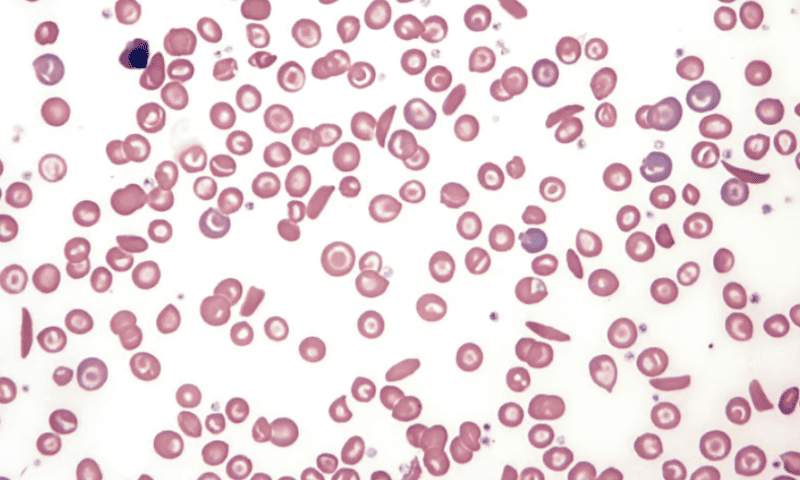Gene therapy has the potential to dramatically benefit patients with genetic blood disorders, but a small study on participants in a clinical trial for sickle cell disease suggests that a key process carried out prior to giving the treatment might cause mutations that make blood stem cells more likely to turn cancerous.
On Nov. 16 in Nature Medicine, an international research team led by the University of York reported that blood stem cells in samples taken from six patients involved in a clinical trial for a sickle cell gene therapy at Boston Children’s Hospital showed signs of mutations that have been linked with cancer development in other settings. The scientists behind the study say it demonstrates the need for long-term studies to determine how the cells go on to evolve.
“Gene therapy holds immense potential to cure genetic conditions such as sickle cell disease, and understanding how the process influences blood stem cell growth in the long run is crucial for safety,” co-senior author David Williams, M.D., who is leading the National Institutes of Health-sponsored clinical trial, said in a press release.
Sickle cell disease is an inherited disorder that causes pathological changes to a patient’s hemoglobin, a component of red blood cells that is responsible for holding onto oxygen so it can be delivered to tissues. These changes to hemoglobin cause the red blood cells to harden, take on a “sickle” shape and die prematurely. Before they die, they may stick together and clog blood flow as they move through the patient’s blood vessels, causing serious complications like infections, stroke and severe pain.
Gene therapy offers a solution by altering a patient’s genes in a way that corrects the underlying mutation or makes it so they express a different, healthy form of hemoglobin. The therapy under study in the clinical trial at Boston Children’s Hospital works by silencing a gene called BCL11A in blood stem cells, so they produce healthy fetal hemoglobin in place of sick adult hemoglobin.
In the new Nature Medicine study, the researchers paired whole-genome sequencing with new methods to follow and compare the DNA of blood stem cells in individual patients before and after they underwent treatment. Doing this showed them that the number of “driver mutations”—a type of DNA mutation that makes a cell better able to grow and proliferate—was higher after gene therapy than before. So too was the number of driver mutations that have been linked to blood cancer, such as changes to the genes DNMT3A and EZH2.
The team behind the study noted that the treatment itself isn’t what causes the mutations. Instead, it appears to come from an earlier part of the process: In order to edit a patient’s blood stem cells to produce fetal hemoglobin, they must be removed from the bone marrow so the genes can be edited outside the body. They are then infused back in, where they proliferate in what’s known as clonal expansion and produce the correct form of hemoglobin.
Co-senior author and University of York researcher David Kent, Ph.D., likened the phenomenon to new seedlings planted after clearing a forest, where some seeds are more likely to survive than others.
“If you imagine that some seedlings are red and some are green, then the ‘selection’ we are observing is akin to having the forest regrow red trees preferentially,” he explained in the press release. His team’s research shows that gene therapy “imposes a selection on different blood stem cells … the treatment might [favor] growth of stem cells with certain mutations, and this in turn could potentially lead to expansion of blood cells containing these mutations.”
The increase in the number of potentially pathological driver mutations suggests they may be part of the “red trees” in Kent’s scenario. They’re helpful for the cell’s survival, hence their increased presence. While it’s not clear what the clinical implications are, it does suggest that monitoring of the changes is warranted. It might also suggest that treating patients before they’ve accumulated a substantial number of driver mutations—that is, when they’re younger—might be something to consider, Williams noted.
“Notably, our study revealed that younger patients, with fewer genetic mutations in their stem cells, didn’t exhibit strong signs of mutations post-therapy,” he said in the press release. “This suggests that treating patients with gene therapy at a younger age could be both safer and more effective, but substantial work needs to be done to test this formally.”
Sickle cell has become a competitive indication for gene therapy developers. CRISPR Therapeutics and Vertex Pharmaceuticals just received a historic first approval for a sickle cell gene therapy using CRISPR gene editing in the U.K. Beam Therapeutics is also working on dosing patients in a phase 1 clinical trial for a similar therapy.

